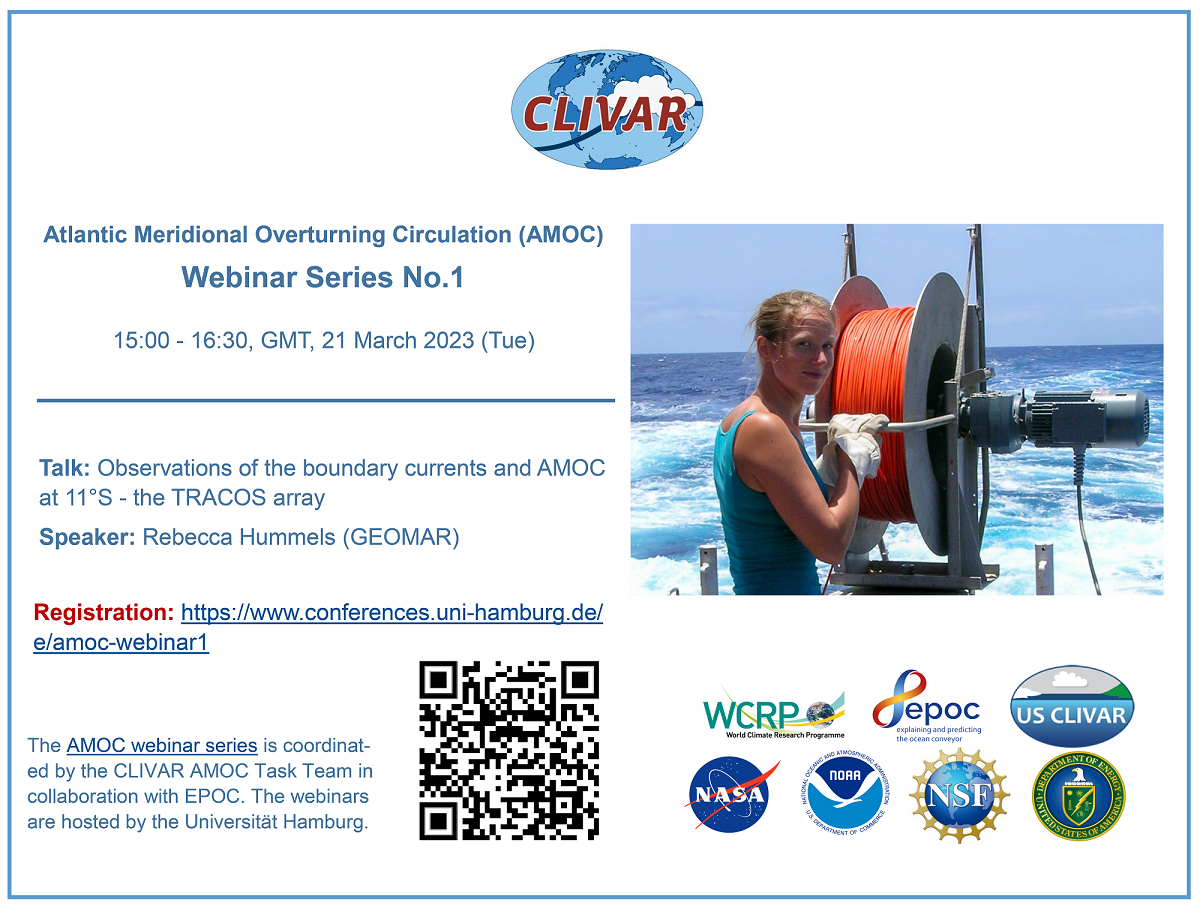[Call for Registration] CLIVAR AMOC Webinar Series 1

In advance of the hybrid, synchronous workshop on Meeting AMOC Observation Needs in a Changing Climate on 18-20 July 2023, at Hamburg, Germany, the organizing committee anticipate organising ~monthly webinars to give an overview of the current AMOC observing system and assessments of the observing system performed to-date.
Registration to the 1st AMOC webinar is now open: https://www.conferences.uni-hamburg.de/e/amoc-webinar1
Time: 16:00-17:30 GMT+1, 21st March 2023
Webinar #1: Rebecca Hummels (GEOMAR)
Her research focus is on observations of oceanic/climate variability in the tropical Atlantic ocean on large and small scales including
⇒ Strength and Variability of the (South Atlantic) MOC
⇒ Western Boundary Circulation Systems
⇒ diapynal mixing processes and their influence on the heat budget of the surface mixed layer
Observations of the boundary currents and AMOC at 11°S - the TRACOS array
The upper-ocean circulation of the tropical Atlantic is a complex superposition of thermohaline and wind-driven flow components. This means that the northward AMOC branch in the tropics is e.g. superimposed by the shallower overturning associated with the wind-driven Subtropical cells, which connect the subduction sites of the subtropics with climate-relevant eastern equatorial upwelling regions. The TRACOS array aims at observing most of the TRopical Atlantic Circulation & Overturning at 11°S. At the western boundary five tall moorings were deployed off Brazil between 2000 and 2004 to monitor the variability of the strong western boundary current (WBC) system - more specifically, the North Brazil Undercurrent (NBUC) and the Deep Western Boundary Current (DWBC). Due to the success of this array, a similar mooring constellation has been installed off Brazil since July 2013 until now. In addition to the moorings, numerous ship-sections along 5°S and 11°S are accomplished. At the eastern side the Angola current is observed since 2013 with 1-2 moorings. Simultaneously to the boundary observing systems, the observational program at 11°S was extended in 2013 to observe the basin wide circulation: Bottom pressure sensors (BPRs) were deployed on both sides of the basin. The BPRs and all ship surveys are used to estimate AMOC variability at 11°S on seasonal to interannual time scales. Especially, in combination with other AMOC arrays or embedded in the TAOS or PIRATA programs, this array has great potential for understanding mechanisms relevant for tropical Atlantic variability, as well as meridional coherence and long-term changes of AMOC variability.
* The AMOC Webinar Series is coordinat-ed by the CLIVAR AMOC Task Team in collaboration with EPOC. The webinars are hosted by the Universität Hamburg. For more information, please visit the AMOC Webinar page.














Add new comment